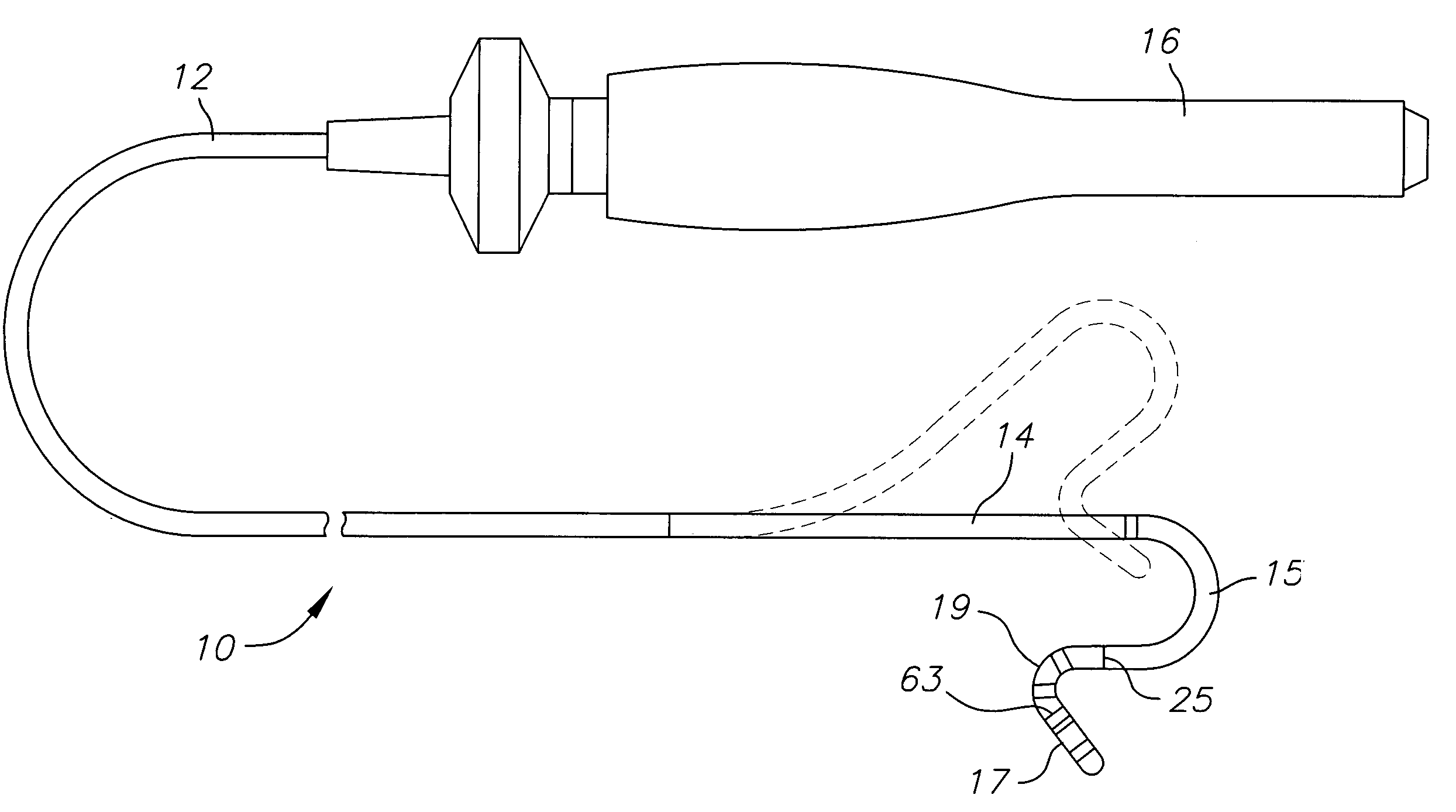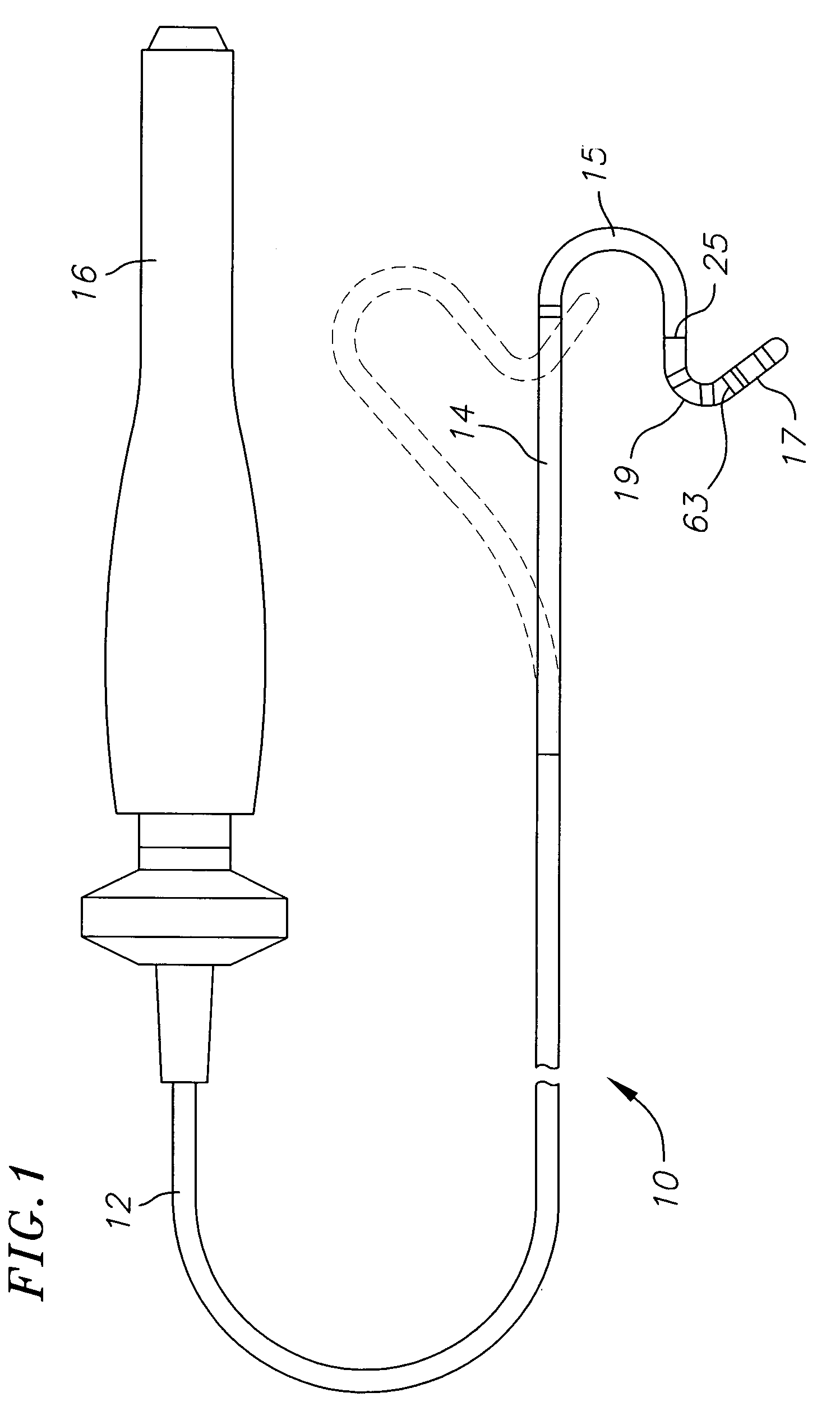Catheter with flexible pre-shaped tip section
a tip section and flexible technology, applied in the field of catheters, can solve the problems of difficult control of the distal end of the straight catheter for effective ablation about the circumference, less effective procedures, and inability to stabilize or support the catheter, so as to improve the ability of the tip assembly to contact, improve the ability of ablation and mapping, and improve the safety features
- Summary
- Abstract
- Description
- Claims
- Application Information
AI Technical Summary
Benefits of technology
Problems solved by technology
Method used
Image
Examples
Embodiment Construction
[0026]Referring to FIG. 1, the present invention provides a catheter 10 having a tip assembly 17 at its distal end. The catheter comprises an elongated catheter body 12 having proximal and distal ends, a deflectable intermediate section 14 at the distal end of the catheter body 12, and a control handle 16 at the proximal end of the catheter body. In accordance with a feature of the present invention, the tip assembly 17 extends distally from a preformed section 15 at the distal end of the intermediate section 14 and is connected thereto by a flexible section 19. In the illustrated embodiment, the tip assembly 17 is adapted for ablation although it is understood by one of ordinary skill in the art that the tip assembly may be adapted for mapping applications, as well.
[0027]In the embodiment of FIG. 1A, the preformed section 15 is a curve which enables the catheter distal end when advanced and maneuvered in a generally cavernous region or structure such as a PV ostium 31 or antrum 33 ...
PUM
 Login to View More
Login to View More Abstract
Description
Claims
Application Information
 Login to View More
Login to View More - R&D
- Intellectual Property
- Life Sciences
- Materials
- Tech Scout
- Unparalleled Data Quality
- Higher Quality Content
- 60% Fewer Hallucinations
Browse by: Latest US Patents, China's latest patents, Technical Efficacy Thesaurus, Application Domain, Technology Topic, Popular Technical Reports.
© 2025 PatSnap. All rights reserved.Legal|Privacy policy|Modern Slavery Act Transparency Statement|Sitemap|About US| Contact US: help@patsnap.com



